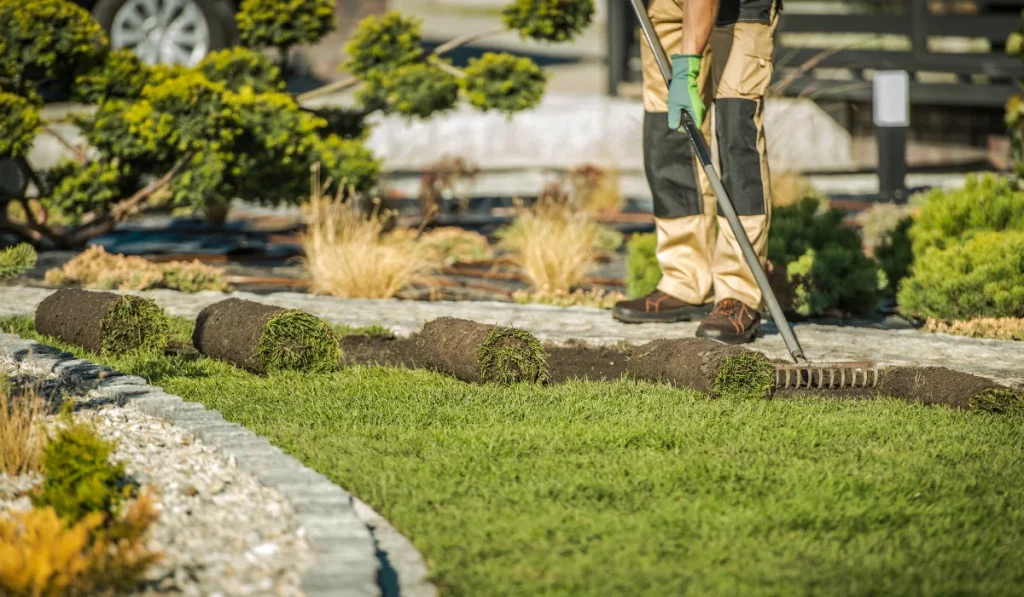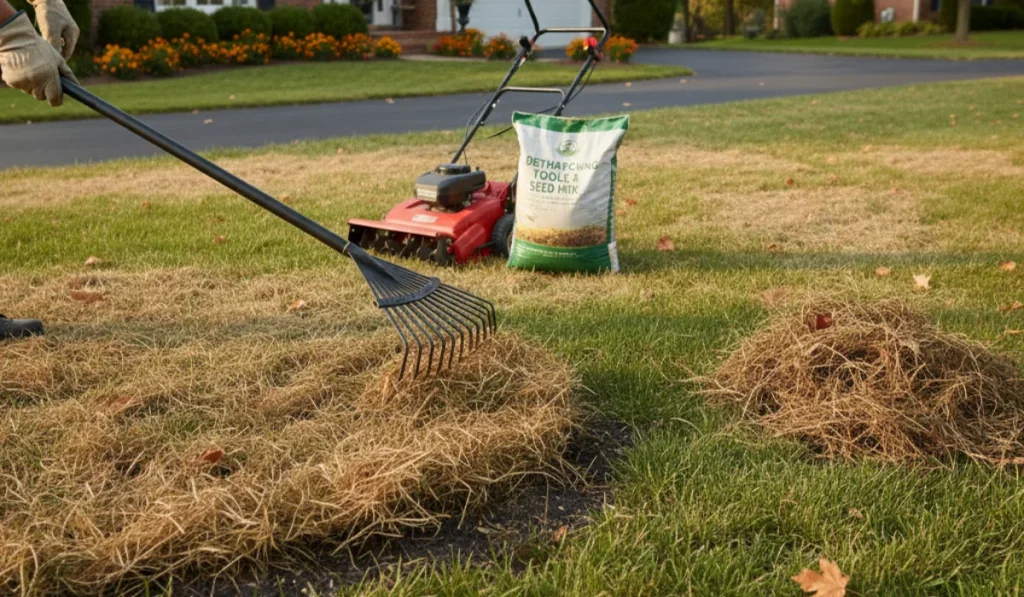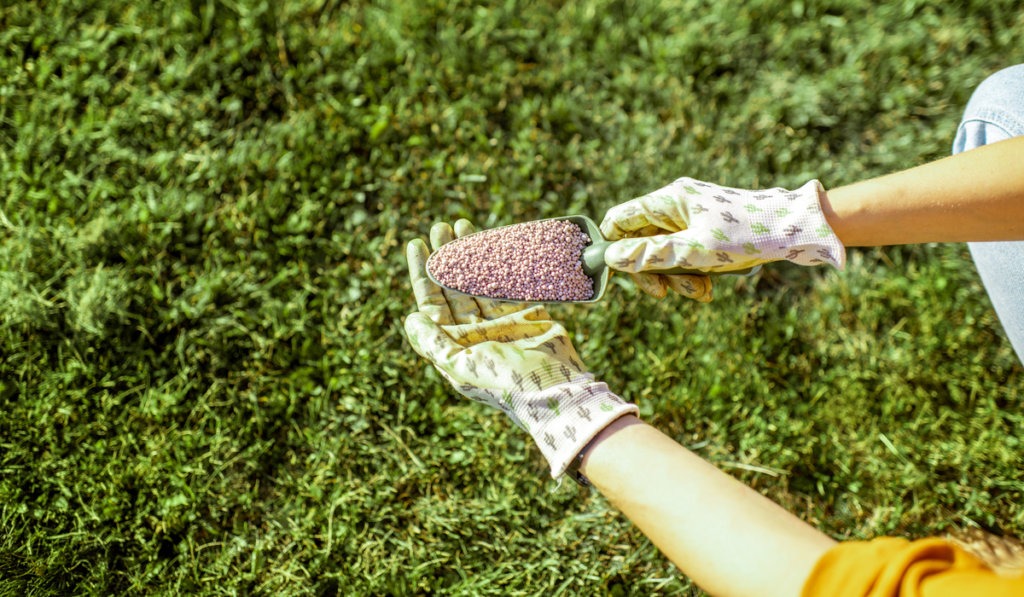Maintaining a green lawn in Southern California is about having the right grass. With water restrictions, rising temperatures, and seasonal drought conditions, you need turfgrass that can stand up to the local climate and still look good.
That’s where drought-tolerant sod comes in.
These grasses are bred to thrive with less water, deeper roots, and stronger heat tolerance. Below are the top sod varieties for California lawns that require a green, rugged, and sustainable appearance under pressure.
Key Takeaways
- TifTuf Bermuda grass grows well in full sun, uses less water, and recovers quickly from foot traffic and heat.
- Zoysia, buffalo, and St. Augustine grasses require less mowing and are well-suited to withstand droughts and various soil types.
- Tall fescue and Kentucky bluegrass blends stay green year-round and work better in shady or cooler California areas.
- Proper watering, mowing, aeration, and overseeding help drought-tolerant lawns remain healthy in changing conditions.
TifTuf Bermuda Grass
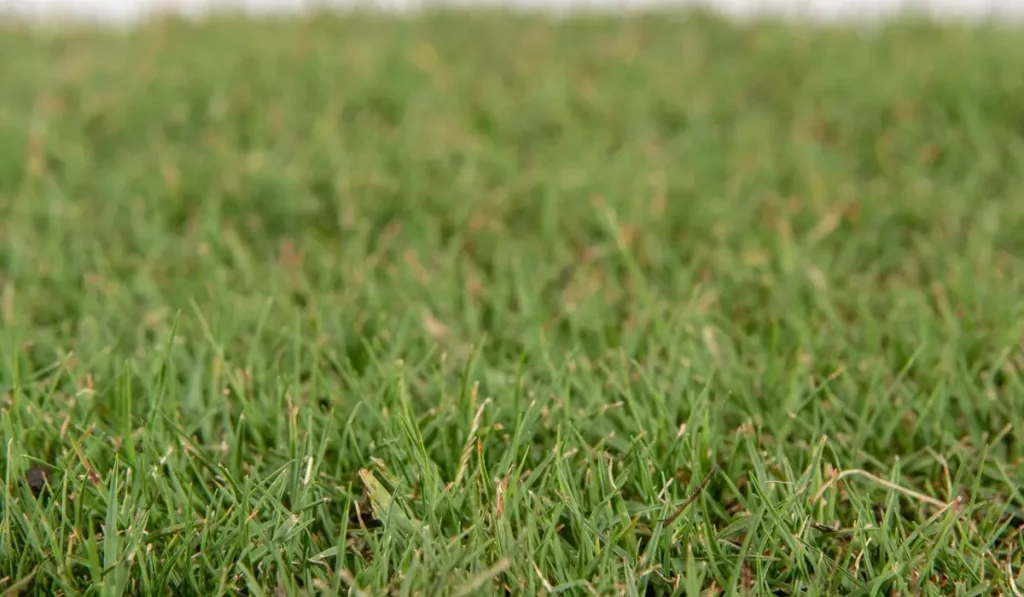
TifTuf Bermuda is a warm-season grass built for Southern California’s dry summers and full sun exposure. It offers a fine texture and rich green color, even in high-traffic areas like sports fields or active backyards.
It was developed to use significantly less water than other Bermuda grass varieties, and it handles drought conditions without compromising appearance.
With its deep root system and fast recovery time, it’s especially well-suited for homeowners who often host or have pets and children who wear down the lawn.
This type of grass doesn’t need frequent mowing, and its growth rate slows down naturally during periods of drought, which saves you time and effort.
As a bonus, it is one of the best drought-tolerant grasses used on golf courses due to its durability and lush appearance.
Zoysia Grass
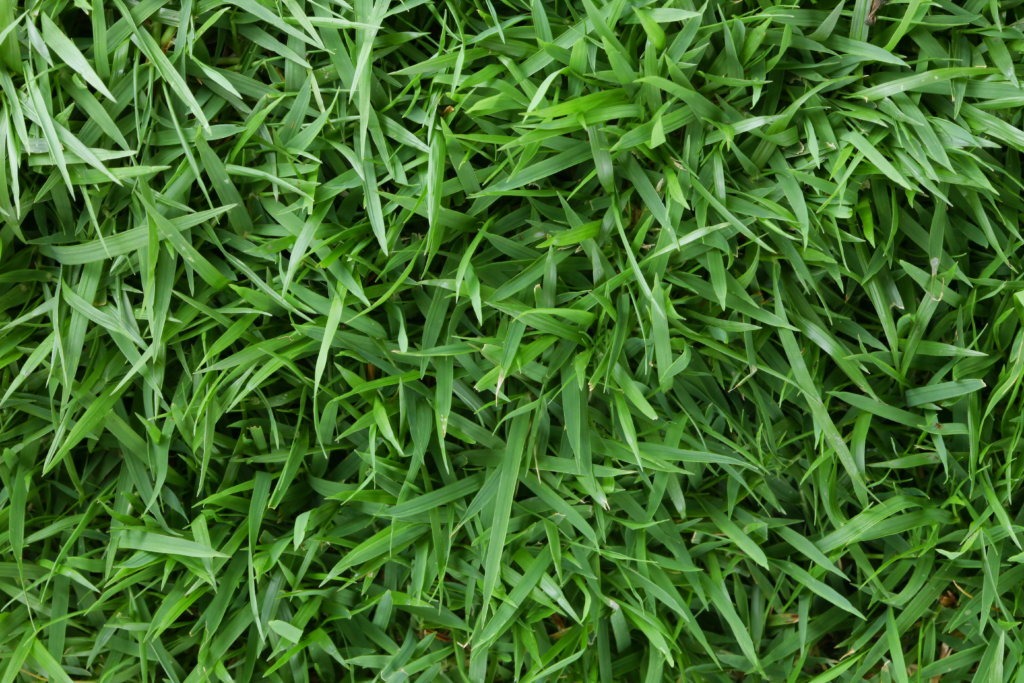
Zoysia grass is another warm-season grass that excels in Southern California’s inland and coastal zones. Known for its drought resistance and low water needs, it forms a thick ground cover that crowds out weeds and tolerates moderate foot traffic.
It grows slowly, so you’ll find yourself mowing less often, which is a plus for anyone looking for a more low-maintenance option. This grass is beneficial for residential landscaping where water usage is a concern.
Once it’s fully established, it can survive extended dry periods, thanks to its deep root system and ability to enter dormancy during extreme heat or lack of moisture.
Buffalo Grass
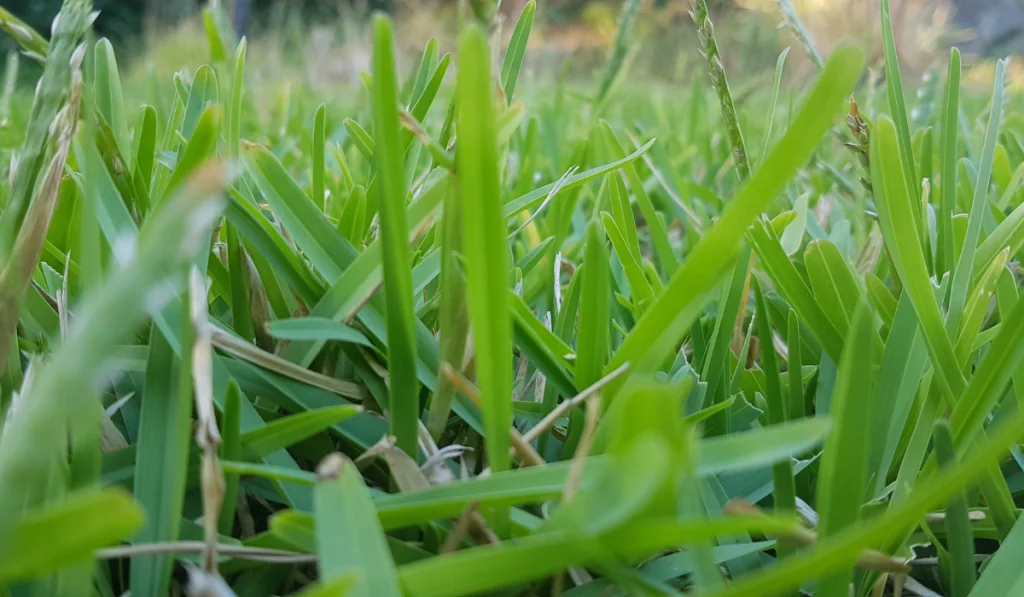
As a native grass from the plains, buffalo grass is ideal if you’re aiming for a drought-tolerant lawn with minimal lawn care needs. This warm-season grass thrives in full sun and prefers well-draining soil types, such as sandy or loamy soil, which are common in many parts of California.
It naturally grows short, which reduces the need for frequent mowing or trimming. While not the best option for high-traffic zones, it’s a smart fit for wide-open lawns or naturalistic landscaping.
Its slow growth rate and preference for low water make it a champion of water conservation and sustainability.
St. Augustine Grass (Drought-Tolerant Cultivars)
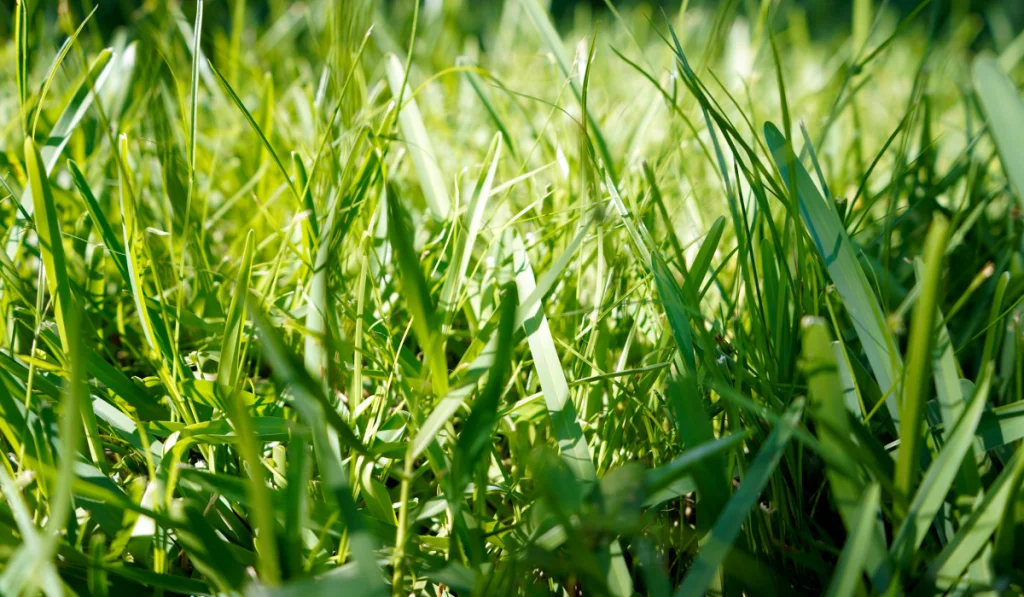
Not all St. Augustine grasses are created equal.
Specific cultivars, such as ‘Palmetto,’ are bred for improved shade tolerance and drought resistance. These types perform exceptionally well in coastal areas or inland yards with trees and other landscaping features that cast partial shade.
This is one of the few warm-season grasses that can tolerate lower light levels and remain relatively green. You’ll need to pay attention to mowing height, as it grows fast and can develop thatch if cut too low.
When managed correctly, it provides a thick, lush turf ideal for families looking for soft, walkable lawn grass in lower-light settings.
Tall Fescue (Drought-Resistant Blends)
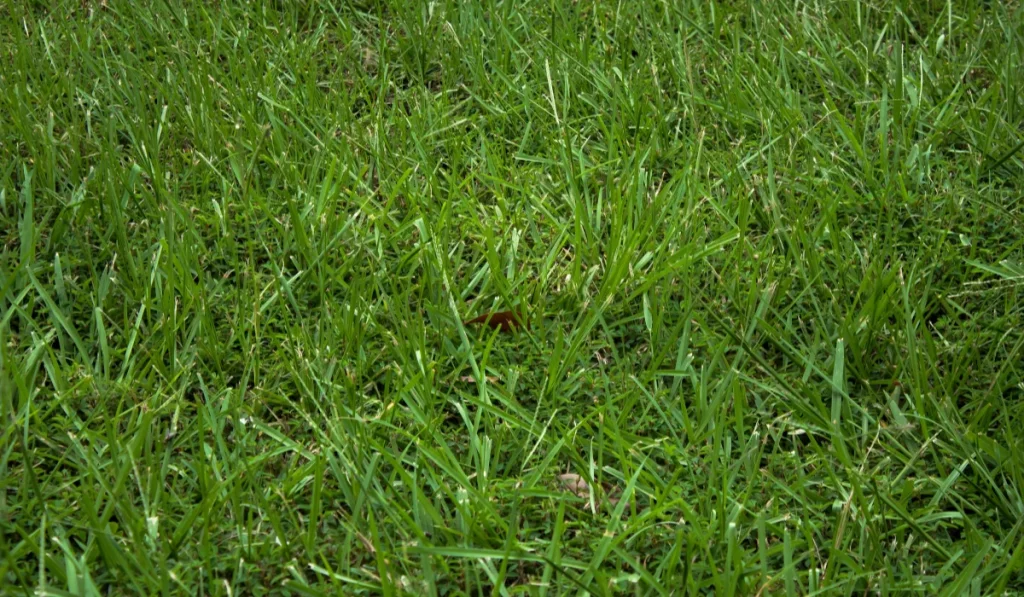
Tall fescue is a cool-season grass, but don’t count it out if you’re in California.
Modern turf-type tall fescue blends (i.e., Rising Star, Titan, or Rhambler lines) have been improved to handle drought conditions and heat better than older versions. These drought-tolerant grasses provide year-round greenery in most areas of the state, particularly in coastal or shaded yards where warm-season grasses may struggle.
It has a deep root system, which gives it excellent drought resistance and helps reduce water usage over time. It handles foot traffic better than most cool-season grasses and doesn’t go dormant as easily.
Plus, it grows well from grass seed, making it a practical option for overseeding or patching.
Kentucky Bluegrass (For Higher Elevations or Blended Mixes)
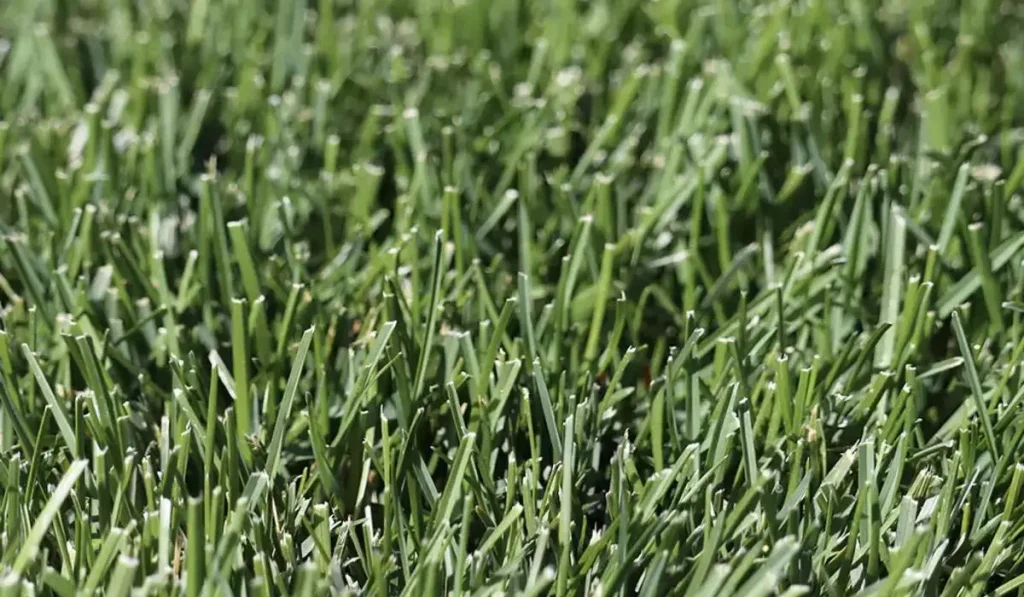
While not a common choice for dry, low-elevation areas, Kentucky bluegrass can be effective in Northern or higher-altitude parts of California when used in a blend with tall fescue. Varieties like ‘Diva,’ ‘Midnight, ’ and ‘Everest’ offer better durability and a darker green lawn, especially in regions that get more seasonal rain.
It requires more water than warm-season grasses, but newer drought-tolerant varieties, combined with proper management, such as regular aeration and overseeding, can make it viable for some Southern California microclimates.
If you plan to use it, focus on areas with good soil types and avoid heavy-use zones unless it’s part of a reinforced blend.
Tips for Maintaining a Drought-Tolerant Lawn
Even the best drought-tolerant sod needs the proper care to thrive. Here’s what you’ll want to focus on:
- Watering: Water deeply but infrequently. Allow the soil to dry between waterings to encourage deeper root growth.
- Mowing: Adjust the mowing height according to the type of grass you are mowing. For most varieties, taller blades help retain soil moisture and shade the roots.
- Aerate: Regular aeration keeps compacted soil from limiting root growth and improves water absorption.
- Overseed: For cool-season grasses, overseeding helps maintain density and color through the seasons.
Frequently Asked Questions
Can you mix different drought-tolerant grasses in one lawn?
Yes, you can mix grasses like tall fescue and Kentucky bluegrass to improve resilience across sunny and shady spots, but make sure their watering, mowing, and growth needs are compatible before blending.
How long does it take for drought-tolerant sod to become established?
Most sod takes two to three weeks to root with daily watering; however, full establishment, where roots anchor deeply and growth becomes even, usually takes four to six weeks, depending on the weather and soil conditions.
What is the best time of year to install drought-tolerant sod in Southern California?
For warm-season grasses, late spring through early summer works best, while cool-season types perform better when installed in early fall before cooler weather slows root development and growth.

